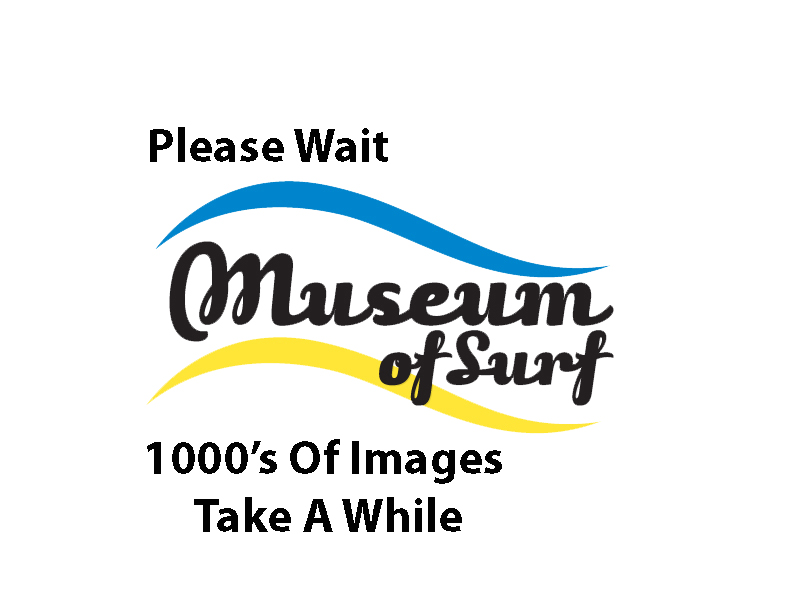Questions I Have Been Asked
???????????????????????????????????????????????????????????????????????
A University Submission!
The following is a list of questions I was asked from a USA student for a submission, the answers are unedited and my opinion only. I only had a short timeframe to answer them and it would be interesting to get other opinions, so if you have constructive objections or you think I have omitted something please email a response as it is food for thought and is from one mind and may not be the views of others?
Email: rob@museumofsurf.com
I will answer your questions as thoroughly and honestly as I can, and I hope it is good enough for your submission?
Q: What are the important aspects of the Australian surfing culture and do you think it differs from others around the world? How? A: Surfing in its infancy was mainly Surf Life Savers having a bit of fun standing on the rescue boards and as more and more young people joined the clubs it became more popular within the surf clubs. Duke Kahanamoku’s public display of surfing in 1915 using a solid timber board was the beginning of surfing as a sport in Australia. The visit of the Californian Olympic swimming team that came to Australia and bought with them Balsa surfboards. ( In the words of Midget Farrelly”It was like Aliens had landed”) These guys were trimming across waves and turning their boards, something unknown with the equipment used in Australia. These balsa boards were so different they changed surfing forever, and the birth of surfboard manufacturers moving from backyard industries to commercial premises and a dedicated crew of craftsmen. This was also the beginning of the numbers of Life Savers declining as the more adventurous only wanted the unstructured life of a surfer. This created a rift between the clubs and the surfers which remained for many years with even physical rifts. To qualify my answer here, it was the break from the accepted society that led to the dedicated surfers becoming regarded as low life bludgers and drug affected rif raff. It wasn’t until the late 80’s that this began to reverse as the surfwear industry grew to become giants in the clothing and surf accessory became a part mainstream industries. The surfboard clubs began to attract sponsorship and the money began to flow enough to support a professional arena. Although this was the start of surfing becoming one of the most popular sports in Australia, it was also this popularity that is leading to the demise of that carefree lifestyle of what was known as the soul surfer. The difference with surfing in Australia compared to other countries is more than likely the sheer size of our coastline and the number of surf breaks. Australia has a huge coastline and can support a massive amount of surfers who have the true watermans enjoyment of travel, to the most remote parts of this massive coastline and settle communities that would have struggled to become even a town without the influx of travelling surfers.
Q: What experience do you personally have with the different sides of surfing?(competitions, just for fun, instructing, spectating, the business side, etc.) A: I have in my 66 years of surfing been an active competitor, Surfing Instructor, Surf Shop Owner, Surfboard manufacturer. This would sum up most surfers who live the lifestyle we have chosen. Everything we did and every decision made was weighed with the amount of time we could surf. It ruled our lives but we made the decision to follow surfing in every aspect of our everyday lives. The manufacturing side of the surfing culture was never considered a money making exercise in the beginning, however, some went on to amass millions these were in the minority as most surfboard builders just made enough to survive. As the professional circuit became a giant with competitions all over the globe, surfboard design benefited with the merging of information and design from all over the world surfboards became very similar and the crowds started to grow. The days of a surf by yourself or just a few mates were over. As a surf instructor, it became a personal battle as every person you taught was just another surfer to share the waves with. On one hand I wanted to share my lifestyle as I considered it a healthy and fulfilling life for everyone involved. Whilst on the other hand, I wanted to keep the soul of surfing for the surfers who had committed their entire life to.
Q: What is your view on the surfing business industry in Australia?(Postive/negative view, benefits/harms society and economy) A: As I said in the previous paragraph, most manufacturers started making boards with only the mindset of having just enough money to survive and surf as many hours as possible. As the sport grew the business became for some too big too quickly, as new brands and clothing labels were released, it seemed a new one every week. This grew the competitiveness between the major labels such as Quiksilver, Billabong and Rip Curl and the lesser brands. The majors would only supply one shop within 20 kilometers of each other and a minimum order amount was set. If you weren’t the first in a town you could only stock the lesser labels. This was to become a war between shops in the same town. The major labels decided they would rule the way the shops did business. They set not only minimum order quantities, they commenced the pack system, this was the demise of the smaller shops as you had to order a minimum pack of ten shirts, etc, in the same style. Previous to this you could order whatever your shop could sell. As these majors became bigger and society embraced the once-shunned surfing lifestyle the pack of twenty then thirty I think now it is up to fifty. This brought about the demise of the smaller surf shops as they could only stock the lessor unknown brands as they didn’t have the pack system, but these weren’t the labels the communities wanted, so the smaller shops began to close leaving only the major corporate companies. This was a major win for the competitors and the professional circuit, as these companies battled it out to run the biggest and best contest with the most prize money, but this went against everything the surfing lifestyle of the noncompetitive or soul surfer as they were known. Even some of the biggest names in surfing began to drop from the competition scene as the fun went out of it. As far as the benefits of surfing as a business, well it soon became evident as with all trends society still accepted surfing and surfers clothing, etc, but they began to embrace other labels and the majors began to suffer and cut back on prizes, sponsorship and so the majors listed on the stock exchange as public companies and some of the founders of these labels sold their shares so they had absolutely severed themselves from the brand that had made them millionaires.
Q: What are Australian’s views on the large surf companies such as Billabong and Ripcurl? Are they still respected in the surf world or have they gone out of style? Do you think these companies loss in popularity would have an effect on the culture? A: These major labels will always hold a place in the surfing industry and surfers will continue to follow them, only because they are still the best at understanding a surfers needs. As far as the wider society is concerned they have become tired of paying high prices for a product that has declined in quality, yet has increased in price all just to wear a surfing brand. Whilst some of the other types of sporting goods and clothing companies have seized the advantage
and with smart advertising campaigns and better quality for a cheaper alternative, it has left the surf companies with only surfers buying their brands, as it was in the beginning. The only problem with that is whilst the surfing community has grown in size, it is still not big enough to support these mammoths. The only hope for the majors is that the surfing community continues to grow enough to eventually support at least a few of them, but it is debatable that all will survive the next few years. The surfing community has grown, but the culture that created it has declined. Most of the master craftsmen are either retired passed on or have ceased to pass down their knowledge to the younger generation so it will be interesting to see the evolution of the surfboard in future years as everything is machine made or the cheaper imports become the standard.
Q: How involved are non-surfers with the surfing culture? Do they come to competitions, mostly buy apparel, become part of surf life-saving clubs? What age groups participate the most in each of these? A: In 1977 a contest was held at Burleigh Heads in Queensland Australia. This was the first competition that had a huge prize. The equivalent of one year’s salary to the winner. The crowd was estimated at 10,000 and filled the entire headland. The crowds have dwindled ever since even the biggest contest in today’s professional contest can only aspire to such a crowd. The general public is still following the contest scene but as with all sport it has become a television crowd, but not a physical crowd. The Surf Clubs members have come full circle as more and more the Surf Clubs have embraced the surfer and watered down the authoritarian rules to bring back young people to fill their ranks. Which in the eyes of most is a positive approach? The rift between the surfer and clubs eventuated because of the rules that robbed them of the freedom they sought. Now it seems there are more surfers involved in surf clubs than actual boardrider clubs. The age of the surf club participants has reduced to what we call nippers whereas the average age of the boardriders has increased. The junior boardriders still attend but only those with aspirations of a professional career persevere whilst the surf club juniors don’t have that sort of pressure, it’s more about having fun! Which is what surfing started out as??? he major brands are asking for smaller obscure logos. There was a time when surf wear was the only thing to be seen wearing even in the west where they were hundreds of miles from the ocean. There are still surf shops but these are more boutique-style shops and where anew brand evolved every week, they are now pretty much stagnated. The smaller family-run surf businesses in your local town, is very rare indeed Q: Does media play a big role in the surf world? (news coverage, social media followings, celebrity surfers, big competitions, etc.) A: The media has always been a driving force in the surfing industry, with surf magazines telling us what to wear or who is the new superstar of surfing but as print media declines so do the surf magazines and these were written by the so-called in-crowd of surfing is at present left to the television coverage of the pro circuit competitions, which basically only attract the competitive minded surfers, not so much the non-competative soul surfer, but these are also in decline as it becomes more competitive to just catch a wave with so many in the water. I digress here as I would say that even the soul surfer who abhors competition has extreme respect for the top surfers in the world or the celebrity surfer as you called them. The average surfer who only gets to surf after work or on weekends will never reach the pinnacle of the sport as it is with all sports. It is only a small group that has that will and drive to become number one that will ever reach these heights. During my lifetime I have been lucky enough to know some of the top surfers throughout the world and the competitive fierceness in them is amazing to me and many of my generation. We just wanted to surf! That was what drove us and we did just that. We didn’t have the latest gear or even a competitive streak. Some of us have become major business entities or live a very comfortable life now, but it was more by luck or just the individuals we became, from being thought of as bums to having the respect of a community during ones lifetime is a humbling experience for some of us. I have interviewed some of the most respected older surfers for our oral history and it is a similar story from most, they didn’t surf to become a legend, they surfed because they loved it! Today’s surfer’s surf to become a legend, and think they have failed when they don’t. I hope this is of some help? It is written rather roughly as I just typed as it came into my head, some of the answers are found in the previous paragraph but I honestly don’t have time to go back and correct it. Good luck with your project and I know it’s a Hawaiin greeting, but all surfers acknowledge the contribution by the people who surfed before we were even a country. Aloha


